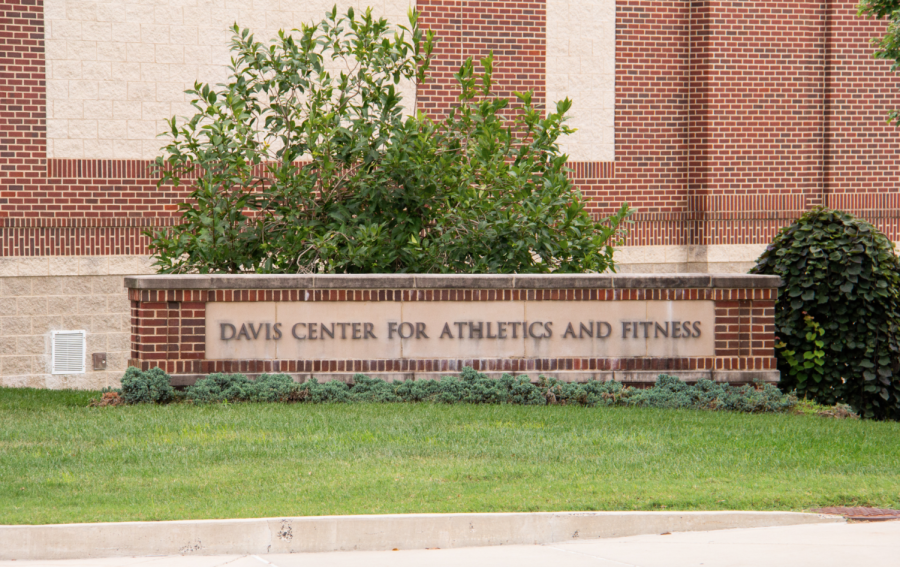The Sexist Intent of the Villanova Gym Dress Code
The Davis Center is a popular place on campus for students to work out.
September 22, 2021
Does anyone wear open-toed shoes to the gym? Apparently, based on the Villanova Fitness Center dress code, they do. I initially thought that the new posters around the Fitness Center were for a new dress code. The dress code is not new. The policy is as follows: “Users must wear closed-toed athletic shoes (exception: yoga/pilates classes) at ALL TIMES. Users must wear a shirt that ALWAYS covers their entire chest and midriff.”
I contacted the Coordinator of Fitness and Recreation because of my confusion. She informed me that the dress code wasn’t actually new, as it has always stated that “Shirts must be worn at all times in the facility.”
She went on to say that “With the ever changing trends in the fitness industry pertaining to gym attire, we wanted to adjust our policy to meet the standards of what we are trying to set forth in our facilities.
Additionally, we have this policy because we want to provide a welcoming environment, prolong the life of our equipment and reduce the risk of various skin infections.” She also added that this policy wasn’t enforced much last year as COVID-19 was the primary concern.
Dress code controversies are nothing new. I feel like it was a more predominant topic years ago when people began to question the intent behind restricting clothing. I remember in high school that we originally weren’t allowed to wear leggings. Then, when the school hired a female head of school, we were then allowed to wear leggings. I don’t think this is a coincidence. It speaks to the dilemma with dress codes: they are sexist.
The Villanova Fitness Center Dress Code is inherently sexist, too. The language is incredibly biased towards female gym-goers. Apart from the closed-toed shoes, the chest and midriff language connotes only female attire. I tend to see females wearing sports bras and cropped tanks. However, I also see many males who wear muscle tanks that are entirely open on the side.
Why wasn’t this male language included if we want everyone to feel welcomed in the gym? Probably because this dress code is targeting women.
The language of opened-toed shoes distracts from the real intent. If the policy had only included the midriff and chest language, it would be too apparent who this dress code was targeting. The language was included to discourage people from pointing out that the dress code is sexist.
If the purpose is to promote a welcoming environment, why establish harsh guidelines for what to wear? The gym should be a place where everyone feels they can attend regardless of what they chose to put on their body. Villanova promotes inclusivity, which comes in all forms. Since this is the case, inclusivity must adhere to both female and male attire. It is not justifiable to tell women they need to cover up or hide their bodies in order to attend a gym. This is the opposite of welcoming.
I think it’s true that fitness trends are changing. There are now more options for everyone to wear when they work out. Consequently, we need to change our mindset for clothes in general. Villanova, and everyone else, must realize that clothing doesn’t need to have too much power and shouldn’t make you feel a certain way. Clothing is just fabric and shouldn’t be given any more weight than this.
Consequently, clothing should be decided by who is wearing it. As long as the person wearing the attire is comfortable, there shouldn’t be a problem. An issue with what someone else is wearing while working out isn’t an issue with the clothes or the changing trends.
Judgment passed about what someone is wearing is a reflection of the person partaking in an unnecessary evaluation of someone else’s attire.
The new dress code does the opposite of its intent to create a welcoming environment. Maybe it protects the equipment or reduces skin issues. However, it predominantly targets and discourages female gym-goers, making it unwelcoming. Clearly, The Fitness Center Dress Code fails to realize the sexist intent behind the language used.










